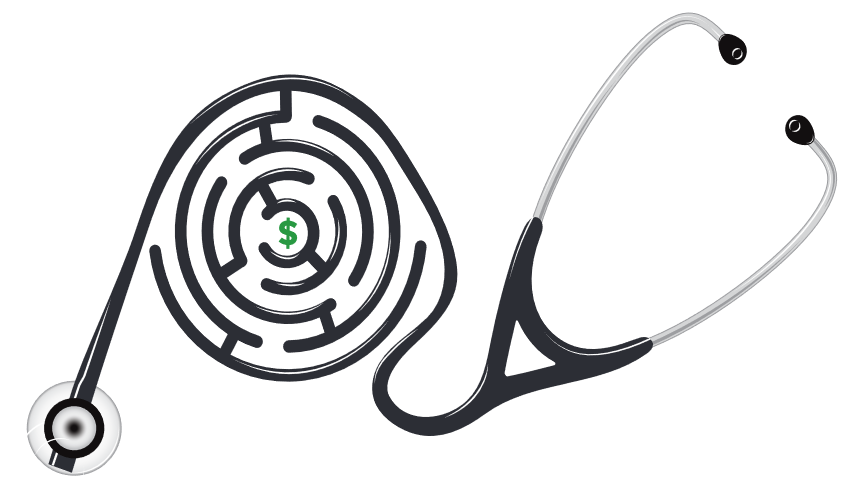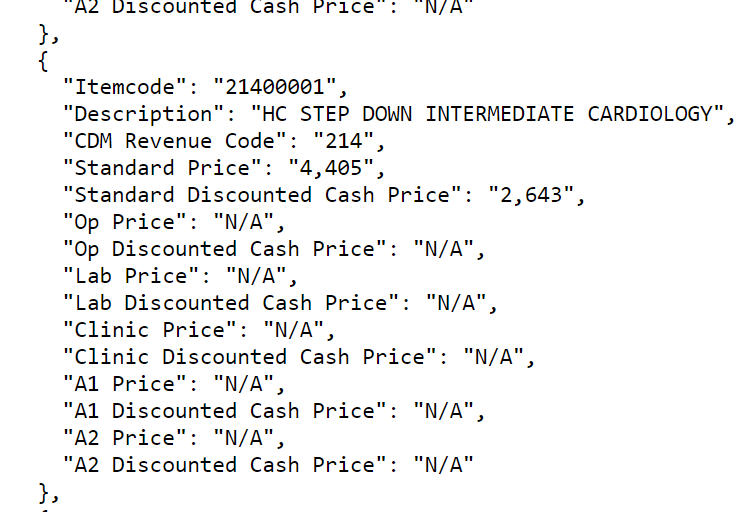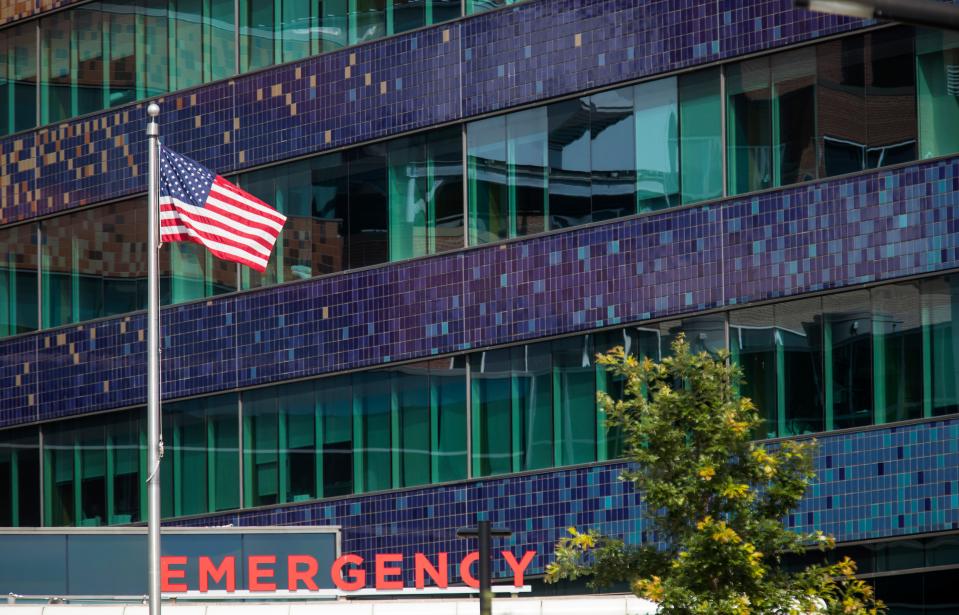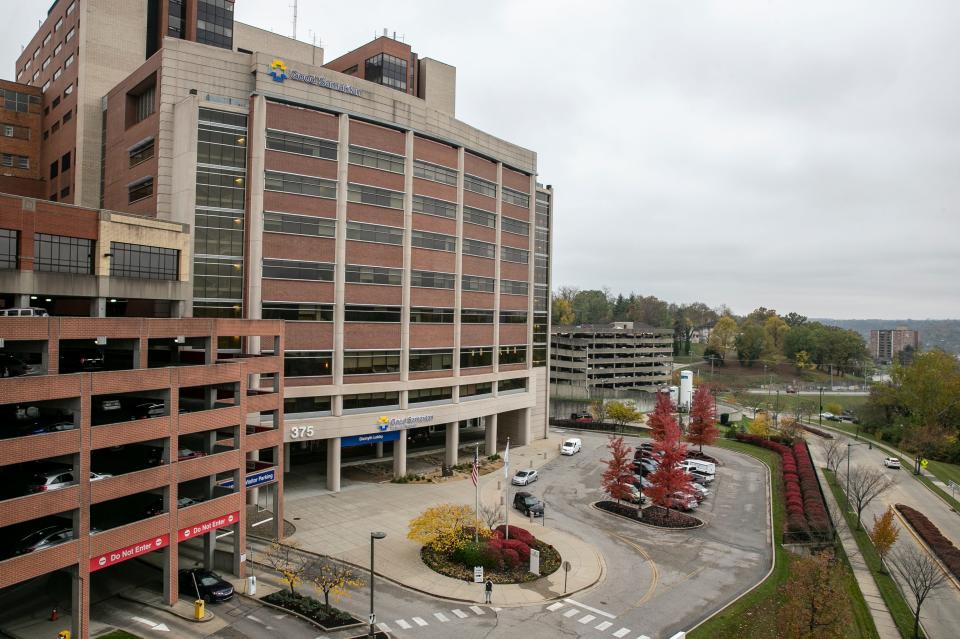'Not simple math:' Cincinnati region's hospitals charge wide range for care

Peter Landesman needed a second echocardiogram but this time around he hadn't met his annual insurance deductible.
He was informed that he would have to absorb the full out of pocket "cash" price, which was more than $1,350. His first echocardiogram, an ultrasound for the heart, cost him $300 with insurance.
So, he decided to shop around a bit.
"I called them back and I said how can it be that it's $1,000 more expensive?" Landesman said. "Then I realized I had met my deductible the year before."
More: Disclosing prices for medical procedures could lower costs, but not all hospitals do
Luckily, Landesman's insurance company had a price comparison tool online. He found that he could get the same exact procedure he received in Cincinnati a year prior for half the price of what his current cash estimate was, in Oxford. That short drive saved him $650.
"You're not asking for the skill of a surgeon here," Landesman said of the procedure, which he received in 2021. "There's really no quality aspect to this. And for me, it was worth it to drive 50 minutes to get the procedure done."
Health care costs are the top concern for middle-income Americans, a recent Primerica survey shows. But even with a federal rule requiring hospitals to disclose estimated prices, shopping for health care remains a convoluted, incomplete, and largely inaccessible process for the casual consumer, an Enquirer investigation found.
Local hospitals provide "good faith estimates" online that name a price for a single insurance provider rather than a wide-ranging view of negotiated rates of each provider, as well as price estimates for individuals without insurance. Other pricing is listed inside a downloadable file in the Json computer language, a challenging format to sift through.

Using data from Turquoise Health, a price transparency startup based in San Diego, and by searching through individual hospital estimates, The Enquirer attempted to sort out negotiated health care prices for 10 of the most common procedures for adults at some of the region's biggest hospitals. Many of the procedures have incomplete prices for negotiated rates or cash discount prices. For others, hospitals listed a large price range for a negotiated cost – such as a cataract removal at Mercy Health's Anderson Hospital that ranges in price from $2,810 to $6,132 if covered by Aetna insurance. The sampling also only includes only a few of the many insurance providers available to the region.
The data does shed some light on health care costs in Cincinnati, or at least the confusing, complicated process in which they are calculated. Many procedures have glaring differences in prices at hospitals in the same market, and in some instances, hospitals in the same health system.
For example, price estimates for a total knee replacement without insurance range from $23,509 at St. Elizabeth's Florence, Fort Thomas, and Grant hospitals to $48,490 at Bon Secours Mercy Health's Jewish Hospital. Similarly, the cash price estimate of a gallbladder removal ranges from $9,232 at a number of St. Elizabeth hospitals to $30,571 at Jewish Hospital.
The prices are only estimates, as a number of factors go into what a final price will look like.
'It's not simple like math where 2+2=4'

Landesman isn't alone in shopping around for health care, but not everyone does so with success. In response to a recent Enquirer survey, only 3 of 9 respondents said they were able to successfully navigate pricing to find savings, with one describing the process as "very difficult."
"Fortunately I am relatively healthy; however, my entire career was spent in health care," another respondent wrote. "There is no transparency because of many factors. It’s not simple like math where 2+2=4."
The Cincinnati region boasts six major health systems, which on paper should allow it a unique level of competitive pricing. But shopping for health care remains a challenge to most. Patients are supposed to believe that their insurance provider of choice has done all of the work to find the lowest price. Many find out that isn't always the case.
"If you go and look online, its frustrating," said Laura Profitt, of Cincinnati, who has mostly had to shop around for insurance providers after her premium tripled in one year. "I'm willing to pay for decent health care. I don't have any problem paying. I don't want to be gouged."
From the health care provider point of view, offering complete price transparency is a challenge due to the number of factors involved at the negotiating table. And since only a few institutions have been penalized for failing to comply with transparency laws, there isn't much incentive to fully cooperate.
A hospital's reputation for quality of care is also a factor in price negotiations and cash price estimates.
In a statement, Billie Jean Mounts, chief revenue officer for Bon Secours Mercy Health, said rates with insurers are negotiated on regular intervals, "based on various factors," which include operating expenses, business and supply costs, and inflation among many others. The negotiations are also specific to each market and to each facility, Mounts said.

"It is important to note that estimates are based on the service," Mounts wrote. "Still, multiple factors, including patient co-morbidities, issues that arise during the procedure, additional medications needed, etc., can impact these estimates."
Same procedure, same health system doesn't always yield same cost
Another frustrating aspect of health care shopping is the variation of pricing that can be seen in the same market and even within the same health system.
Here are some differences in cash price estimates between hospitals in the same health system:
The cash price estimate for a cataract removal is $11,133 at Mercy Health's Clermont Hospital and $9,585 at Mercy's West Hospital.
A gallbladder removal is estimated to cost $9,771 at TriHealth's Evendale-Beacon Ambulatory Surgical Center and $12,786 at Good Samaritan Hospital.
A hysterectomy at UC Health's University of Cincinnati Medical Center has an estimated cash price of $34,531, far less than the $55,850 estimate at UC Health's West Chester Hospital.
In a statement, Thomas Lange, a TriHealth spokesman said "estimates are truly customized for each patient we see as everyone's insurance benefits are unique."
"It’s important to recognize the tremendous administrative burden this places on health care systems to produce this information until systems one day make this easier," he said. "As an industry, we will continue to do our best with the tools we have today and get better over time."
A difficult system is no consolation to the millions of Americans concerned about health care costs and the fight for transparency associated with those concerns, said Lovisa Gustafsson, vice president of controlling health care at the Commonwealth Fund, a New York-based health care think tank. While quality measures can be a factor in health care pricing, Gustafsson said many studies show that there isn't exactly a correlation between quality and pricing at American hospitals.
"I think for the most part there isn't a good reason for it," Gustafsson said about different prices in the same health system. "There could obviously be a reason why one hospital might be a little bit more expensive just because of their overall cost structure, where they are, patients they serve. But some of the variations that we see are two, three, or four times the price sometimes. And that doesn't really make sense."
This article originally appeared on Cincinnati Enquirer: Cincinnati health care costs largely not transparent to consumers

